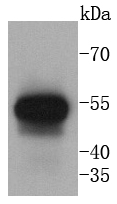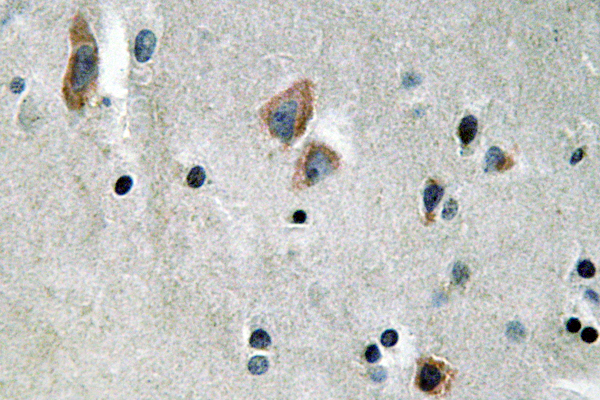Mouse anti Human Keratin 14
X1253M
ApplicationsWestern Blot, ImmunoHistoChemistry, ImmunoHistoChemistry Frozen
Product group Antibodies
ReactivityHuman
TargetKRT14
Overview
- SupplierNordic-MUbio
- Product NameMouse anti Human Keratin 14
- Delivery Days Customer7
- Application Supplier NoteDetects human cytokeratin 14 by Western blot at 50 kDa. Does not react with other cytokeratins or other proteins. Also works for immunohistochemistry using frozen tissues. Does not work with paraffin embedded tissues. Optimal concentration should be evaluated by serial dilutions.
- ApplicationsWestern Blot, ImmunoHistoChemistry, ImmunoHistoChemistry Frozen
- Applications SupplierImmunohistochemistry (frozen);Western Blotting;Immunohistochemistry (frozen)
- CertificationResearch Use Only
- ClonalityMonoclonal
- Clone IDDE-SPK14
- ConjugateUnconjugated
- Gene ID3861
- Target nameKRT14
- Target descriptionkeratin 14
- Target synonymsCK14, EBS1, EBS1A, EBS1B, EBS1C, EBS1D, EBS3, EBS4, K14, NFJ, keratin, type I cytoskeletal 14, cytokeratin 14, keratin 14, type I
- HostMouse
- IsotypeIgG2b
- Protein IDP02533
- Protein NameKeratin, type I cytoskeletal 14
- Shelf life instructionSee expiration date on vial
- ReactivityHuman
- Reactivity SupplierHuman
- Reactivity Supplier NoteHybridoma produced by the fusion of splenocytes from mice immunized with synthetic peptide conjugated to KLH corresponding to the carboxy terminal sequence of human cytokeratin 14 (KVVSTHEQVLRTKN) and mouse myeloma cells.
- UNSPSC12352203





